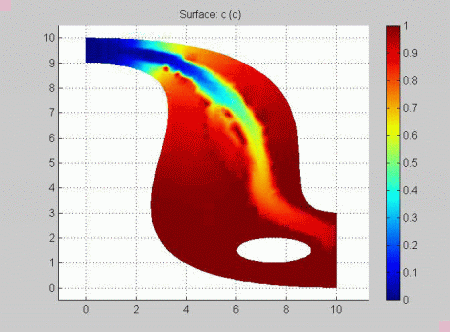Freshwater Intrusion:
The estuary is initially saline (c = 1), and the marine end-member is held constant at c=1. Freshwater (c=0) enters at the top of the estuary at 40 m3/s. Numerical instabilities are evident due to the course FE grid that does not resolve the channel banks well. Click image for mpeg movie (1.8 MB).
